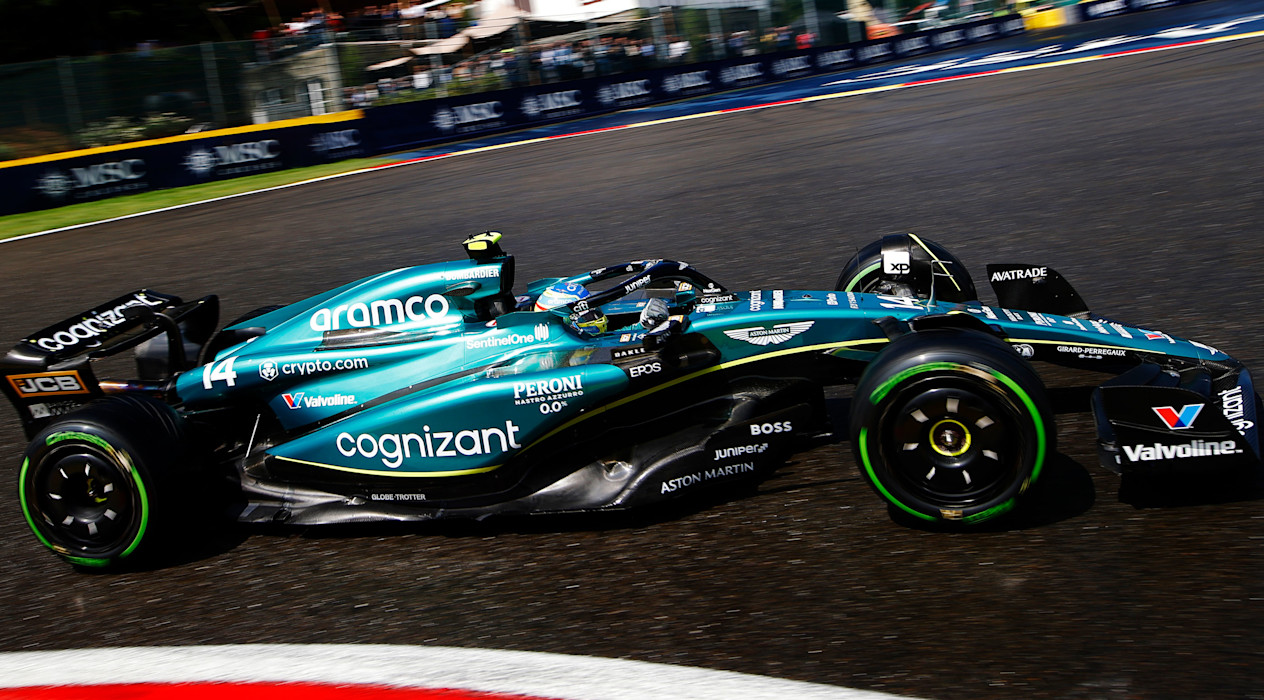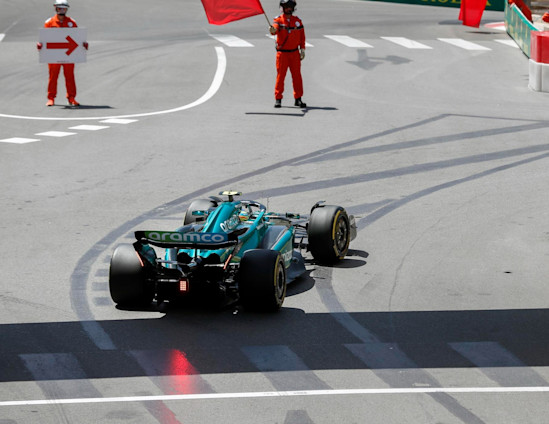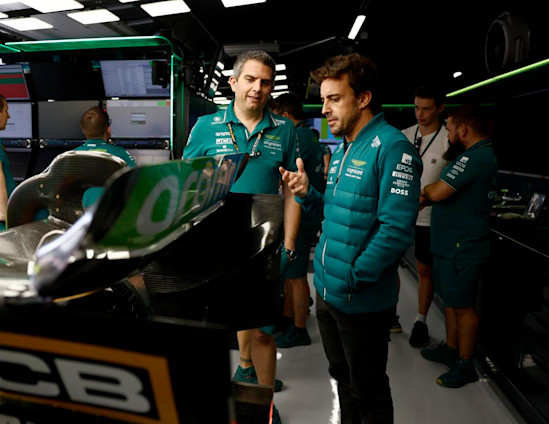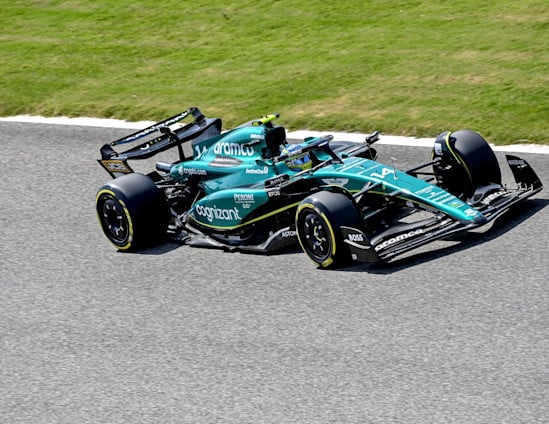
How many points do you get for winning a Grand Prix? When are half points awarded? And can you score points in a Sprint race? We provide the answers with our Official Trading Partner AvaTrade in our latest educational guide designed to help newcomers to F1® make sense of the sport's regulations.
Fast and frenetic, the relentless drumbeat of the F1® season affords little time for reflection, there’s always the next race, the next lap, the next upgrade… But the F1® summer break provides a rare opportunity to reflect on the first half of the season and that typically includes glancing at the championship standings and respective points tallies.
However, there's more to scoring points in F1® than finishing in the top 10 on Sunday. In the latest instalment of 'AvaTrade explains the F1® rulebook', our educational series where we team up with our Official Trading Partner to help new F1® fans make sense of the sport’s regulations, we break down the F1® points scoring system and reveal how the rules around scoring points have evolved since the World Championship's inception.
Straight to the point
At the Belgian Grand Prix, the final round of the season before the summer break, AMF1® Team drivers Fernando and Lance came home in fifth and ninth place, respectively in Sunday’s race. With points awarded to the top 10 finishers in a Grand Prix on a sliding scale of 25-18-15-12-10-8-6-4-2-1, Fernando added 10 points to his Drivers' Championship tally, while Lance added two points to his total for the campaign. And, combined, the pair secured 12 points for the team in the Constructors' Championship.
However, this scoring system for Grands Prix hasn't always been in place. When the World Championship first began, points were only awarded to the top-five finishers, with an extra point given to the driver who posted the fastest lap of the race. Points were awarded in the following order from first to fifth: 8-6-4-3-2.

Furthermore, only the top-five results of a driver’s campaign would contribute to their tally. This rule evolved throughout the decades following the World Championship’s inaugural campaign in 1950, arguably becoming most complex in 1979 when the four best results from the driver's first seven races were added to their four best results from the final eight races of the season.
It wasn’t until 1991 that every point a driver scored was added to their championship tally, while F1®'s points system became a bit more generous in 1960; with the sixth-place finisher also eligible for a point – although the fastest lap bonus point was removed.
There wasn’t always a Constructors' Championship
In the inaugural years of the World Championship, teams weren’t awarded points. It wasn’t until 1958 that the Constructors' Championship was introduced, and even then, only a team's top-finishing driver contributed to its championship tally – as long as the driver came home in the top six. This changed in 1979 when more than one car from each team was eligible to score points, and this had a significant impact on the race for the Constructors' title.
Prior to 1979, there were only three instances of the Constructors' Championship being won by a team different to that of the Drivers' Champion but in the 1980s alone there were five occasions of this.
The rule change rewarded consistency and, as the financial rewards depending on finishing position in the Constructors' Championship increased over the years, teams would strive to have every driver score as many points for them as possible.

The modern-day
From 1962, the winner of a race received nine points but the points system was tweaked again in 1991, with 10 points awarded to the winner before a further revision in 2003 saw the top eight finishers earn points on a sliding scale of 10-8-6-5-4-3-2-1.
It wasn't until 2010 that the points system currently used in the sport was introduced, albeit with one exception. A bonus point for fastest lap only returned in 2019, after some six decades, and is awarded to the driver who sets the fastest lap of the Grand Prix providing they finish in the top 10. Cue extra excitement at the end of the race as drivers and teams are now incentivised to fit a new set of tyres and blaze out of the pits to set a blistering lap in pursuit of an extra point.
An extra point may not sound like much, but it can make all the difference come the end of the season. The drivers' title has been decided by one point – or fewer – on nine occasions.
Half points
If a race is shortened due to rain or an incident, then full points might not be awarded. Niki Lauda famously clinched the 1984 title by a mere half point, owing to the fact that the Monaco Grand Prix was red-flagged and not resumed. With less than three-quarters of the full race distance completed, half points were awarded to the top six finishers.
Today, it’s no longer possible to score half points and the F1® Sporting Regulations set out how many points can be awarded depending on how much a race has been shortened by.
| P1 | P2 | P3 | P4 | P5 | P6 | P7 | P8 | P9 | P10 | Fastest Lap | |
|---|---|---|---|---|---|---|---|---|---|---|---|
| Between two laps and 25% race distance | 6 | 4 | 3 | 2 | 1 | ||||||
| Between 25% and 50% race distance | 13 | 10 | 8 | 7 | 5 | 4 | 3 | 2 | 1 | ||
| Between 50% and 75% race distance | 19 | 14 | 12 | 10 | 8 | 6 | 4 | 3 | 2 | 1 | 1 |
| 75% or more race distance: Full points |
Another way to score
Another way to score Introduced in 2021 to inject extra variety and risk into the race weekend, the F1® Sprint – a 100km dash to the line – provides another opportunity for drivers and teams to add to their points tally. While only the top three finishers of the Sprint scored points in 2021, the regulations were changed in 2022 to award eight points for victory down to one point for eighth.
Be it the Sprint on Saturday or the Grand Prix on Sunday, every point matters. The F1® rulebook has evolved dramatically since the inaugural World Championship in 1950, but drivers’ and teams’ burning desire to maximise their points haul from every race weekend in the bid to be crowned World Champions remains just the same.
Learn more with AvaTrade
In the same way that a racing driver can constantly learn and improve using data, AvaTrade encourages traders to hone and refine their own skills – courses are created by experts, free to access, tightly focused and comprehensive.
You can discover more about our partnership with AvaTrade and access a suite of free educational resources designed to help you enhance your trading skills.

AVATRADE EXPLAINS THE F1 RULEBOOK
Amplify your fan experience
From exclusive collabs to once-in-a-lifetime prizes, I / AM DROPS is a new series of unique and ultra-limited moments and fan experiences.
Sign up for I / AM or sign in to unlock.









































